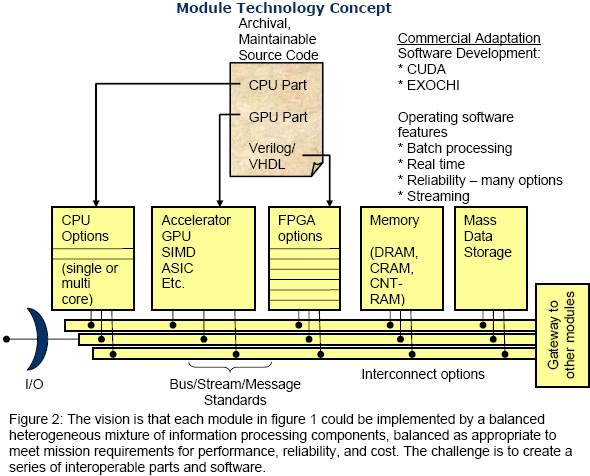Fault-Tolerant Spaceborne Computing Employing New Technologies
VISION
We present here a example and generalization of a parallel, heterogeneous space computing systems.Semiconductor advances are reducing power per function exponentially, making it feasible for spacecraft to have many processors. This will lead to system architectures like that shown in figure 1 with modules each having different reliability constraints. A future spacecraft could augment its very high reliability control computer with a high performance computational subsystem with more moderate reliability constraints.


Operating software sufficient for space applications is included in the vision as well. This operating software will be capable of executing functions with varying degrees of fault tolerance across the envisioned system.
The vision includes extensive support for real time and streaming applications and data, in addition to conventional batch-type functions. This will include programmable streaming between I/O devices (antennas, cameras) and various processing resources (memory, CPU, accelerator, FPGA, etc.)
Document date April 13, 2008.